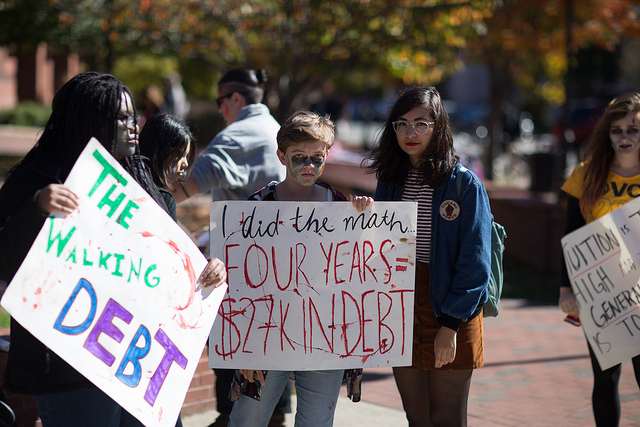
While considerable media attention has been paid to the student debt crisis in the United States, few stories have detailed how this burden falls disproportionately on Black borrowers. Recently, CNBC interviewed Jason Houle about how student loans contribute to the racial wealth gap.
In their research, Houle and his co-author found that Black Americans accumulate nearly twice as much debt as their white counterparts by graduation. This disparity grows through adulthood as Black borrowers pay their loans at a slower rate than whites (4% per year vs. 10% per year). Fifteen years after college, Black borrowers hold 185% more student debt than whites. Houle contends that “the racial wealth gap is both the biggest and has grown the fastest among those with a college education,” and that student loans are a primary reason for this trend. In fact, student loans explain roughly 25% of the total racial wealth gap by age 30.
Houle offers several explanations for this gap. Black students on average have less financial capacity to pay for college than whites, causing them to pursue more loans. Additionally, Black students are more likely to attend expensive for-profit colleges and use private loans, both of which offer fewer protections to consumers. Houle uses the phrase “predatory inclusion” to describe this phenomenon, remarking that expanded access to higher education for Black Americans has also expanded opportunities for financial institutions to exploit them. These findings have made Houle rethink the metaphor of higher education as an engine of upward mobility:
“In a world where we have rising college costs and rising student debt, it raises questions about whether or not that engine may be sputtering out.”







